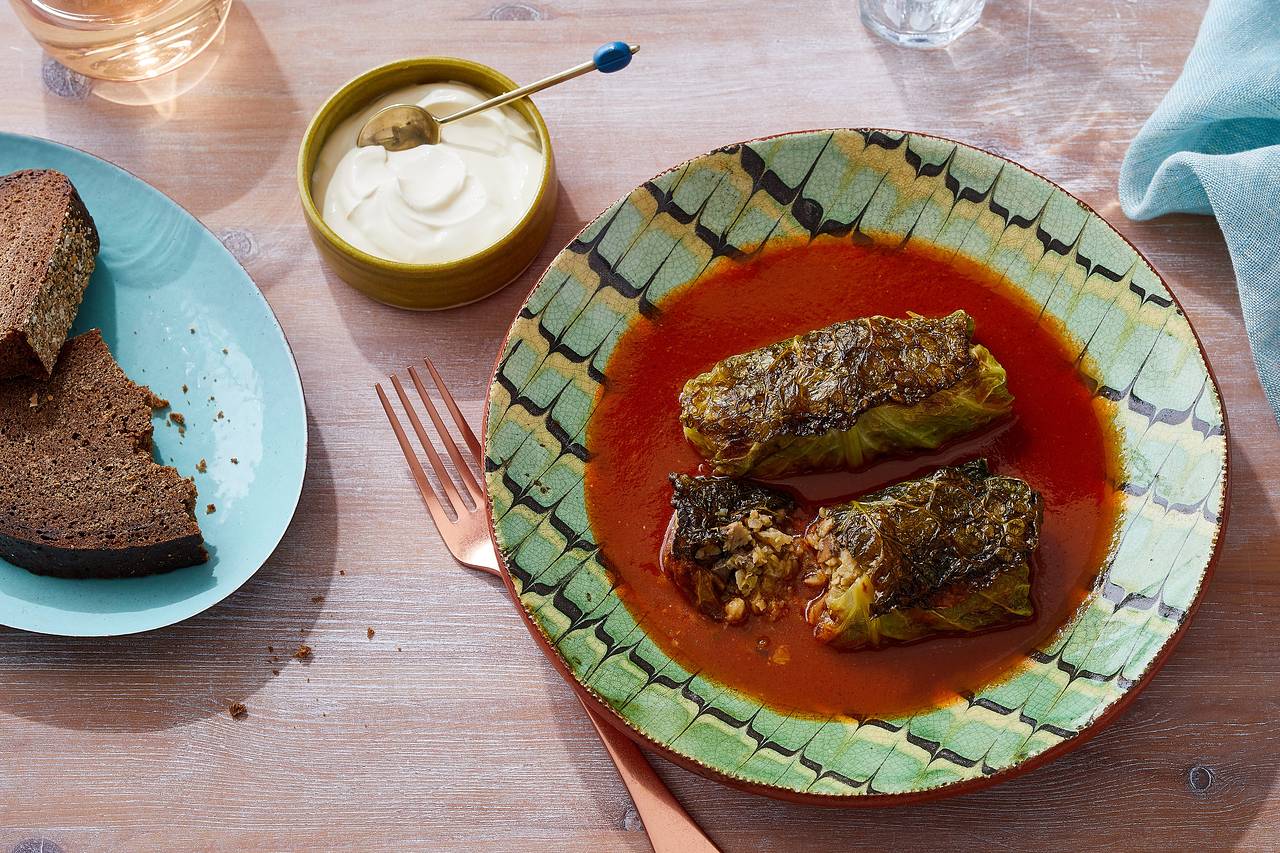
Mr. Skowronski and his co-chef and partner, Kate Lasky, serve their own take on Polish gołąbki at Apteka, in Pittsburgh. Filled with a mix of mushrooms, some of which they forage themselves, as well as buckwheat and roasted vegetables, their vegan version comes in a tomato broth infused with smoked paprika. Satisfying and also surprisingly light, it’s a delicious delivery system for seasonal produce that makes at least as much sense in spring or summer as it does in winter or fall.
Remarkably meaty for a meatless dish, the filling presents a range of pleasing textures. Taking a cue from Mr. Skowronski’s grandmother, before they stuff and roll the cabbage leaves, the chefs pan-roast the mushrooms, onions, fennel and thin-sliced cabbage for the filling until they’re deeply caramelized. “Those roasty, kind of tacky bits that stick to the pan are the best part,” said Mr. Skowronski.
“ ‘It’s a delicious delivery system for seasonal produce that makes sense in spring.’ ”
Once you embrace the multi-seasonal versatility of this dish, you’ll find yourself scoping out all manner of leaves at the market. At Achilles Heel in the Greenpoint section of Brooklyn, N.Y., chef Desiree Tuttle wraps a filling of brown rice, onions and mushrooms in delicate chard. “Something about being in this neighborhood, which is very Polish and Eastern European, made it feel right to put this on the menu,” she said. Ms. Tuttle calls the small chard packets “love letters.”
Because chard is more tender than cabbage, these rolls are quick to cook, minus the traditional oven-braising step. Ms. Tuttle just gives the leaves a quick blanch before tucking in the filling and rolling, then browns the rolls in a cast-iron skillet. She serves them with a grating of Parmesan and a spicy, garlicky tomato sauce that brings a nice edge to the dish. “The sauce is important to help you get through the unctuous filling,” said the chef.
Ms. Tuttle also suggested brawny greens such as collards and even romaine as wrappers. For me, at this time of year, radicchio is the obvious choice. At its peak in spring and fall, the bitter chicory stands up well to a stuffing of ground lamb spiced with cumin and coriander, plus a handful of bracing parsley and mint. Studded with pine nuts and raisins, enriched with goat cheese and a splash of Sherry vinegar, these radicchio rolls skew sort of Sicilian. Roasting sweetens the radicchio, but the leaves retain enough bite to balance the lamb. A yogurt sauce spiked with preserved lemon and sumac tastes like sunshine.
All of these rolls can be prepared ahead of time and heated before serving, making them a highly accommodating dinner-party dish. They also travel well, whether you’re toting them to a potluck or a picnic, so they suit a wide range of occasions as well as seasons. “You’re stuffing a vegetable with more vegetables,” said Ms. Tuttle. “That’s just really comforting, and there’s never not a time for that.”
Stuffed Radicchio With Preserved-Lemon Yogurt
TOTAL TIME: 35 minutes MAKES: 14 rolls
For the filling:
½ cup pine nuts
1 large egg, beaten
1 clove garlic, minced
¼ cup chopped parsley
¼ cup chopped mint
⅓ cup crumbled goat cheese
¼ teaspoon ground coriander
¼ teaspoon ground cumin
½ teaspoon red chile flakes
¼ cup chopped golden raisins
1 tablespoon Sherry vinegar
2 tablespoons extra-virgin olive oil
1½ teaspoons kosher salt
1 pound ground lamb
For assembly and yogurt sauce:
Kosher salt
1 large head radicchio, cored and outer
layers removed
2 tablespoons extra-virgin olive oil, plus more for drizzling
1 cup Greek yogurt
1 tablespoon chopped preserved lemon
Zest and juice of ½ lemon
Kosher salt
¼ cup torn mint leaves
1 teaspoon sumac
-
Preheat oven to 400 degrees. Toast pine nuts until golden brown, about 6 minutes. Set aside and let cool slightly. In a large bowl, combine all ingredients for filling. Use your hands to mix until ingredients are evenly distributed.
-
Bring a medium pot of salted water to a boil over medium-high heat. Prepare an ice-water bath. Carefully add whole radicchio head to boiling water and blanch until leaves soften, 1-2 minutes. Transfer radicchio to ice-water bath to halt cooking.
-
Cover work surface with a few layers of paper towels. Peel radicchio leaves and place on paper towels to drain. Layer more paper towels between leaves as you go. If inner leaves seem tough, blanch further in boiling water until softened and flexible and transfer to ice-water bath. Continue until you have about 15 leaves.
-
Use your hands to gently roll about ¼ cup filling into an oblong cylinder. Place filling just above base of leaf. Fold all sides of leaf in on each other, ensuring all filling is enclosed, and roll tightly to secure. Transfer roll to a baking dish and repeat with remaining filling and radicchio leaves. Lightly drizzle olive oil all over and cover tightly with foil. Bake until radicchio leaves appear glossy, about 10 minutes. Remove foil and continue to bake until a cake tester inserted into middle of a roll feels warm, indicating that lamb is cooked through, 8 minutes. Remove from oven and let cool slightly.
-
Make the yogurt sauce: In a medium bowl, combine 2 tablespoons olive oil, yogurt, preserved lemon and lemon juice and zest. Season with salt to taste. Sprinkle with mint leaves and sumac. Serve stuffed radicchio rolls with sauce on the side.
—Developed by Eleanore Park
Gołąbki (Stuffed Cabbage)

Photo: Bryan Gardner for The Wall Street Journal, Food Styling by Heather Meldrom, Prop Styling by Sarah Vasil
At Apteka in Pittsburgh, Tomasz Skowronski and Kate Lasky serve their cabbage rolls with a smoky tomato broth in place of the traditional tomato sauce, for a lighter take on this classic dish. This recipe relies on deeply caramelizing the vegetables that go into the filling, which is no short work but well worth the time. If you don’t have ground flax seed, or you’re not attached to keeping the recipe vegan, replace the ground flax seed plus water with a beaten large egg to bind the filling.
TOTAL TIME: 3½ hours MAKES: 20 ROLLS
For the broth:
¾ cup sunflower oil or other neutral oil
10 cloves garlic, crushed
4 smoked dried smoked chiles, such chipotle or pasilla de Oaxaca
1 tablespoon smoked paprika
1 tablespoon allspice
1 tablespoon black peppercorns, lightly crushed
4 cups crushed tomatoes
4 cups vegetable stock
4 cups water
2 onions, peeled and quartered
6 bay leaves
2 cups dried mushrooms, preferably porcini
Kosher salt and freshly ground black pepper
Granulated sugar (optional)
For the filling and assembly:
1 poblano chile
1½ heads savoy cabbage
10 tablespoons sunflower oil, or any neutral oil
1 large onions, finely chopped
2 fennel bulbs, tough layers removed and finely sliced
Kosher salt
1½ pounds chanterelle mushrooms or mix of cremini and oyster mushrooms, trimmed and roughly chopped
2 cloves garlic, minced
¾ cup buckwheat
¾ cup water
½ cup cooked cannellini beans, rinsed and drained
1 tablespoon finely ground flax seed
3 tablespoons hot water
2 tablespoons chopped parsley
½ cup vegetable stock
For serving:
Sour cream or non-dairy sour cream
Dark rye bread
-
Make the tomato broth: In a large pot, heat oil over medium heat. Add garlic, chile peppers, smoked paprika, allspice and black peppercorns. Cook, stirring often, to infuse oil, about 4 minutes. Add crushed tomatoes, vegetable stock, water, onions, bay leaves and dried mushrooms. Cover until broth comes to a low boil. Reduce heat to low and simmer, stirring occasionally, until flavors are bright and big, 1-1½ hours. Season with salt and black pepper to taste. If broth seems too acidic, add pinch of sugar to balance. Skim any excess oil. Pour through a fine-mesh strainer and set aside. (Broth can be made 3 hours ahead and kept in an airtight container in the refrigerator. Bring broth to simmer before serving.)
-
Meanwhile make the filling: Preheat broiler to high. Place poblano chile under broiler, turning occasionally, until charred all over, about 12 minutes. Transfer chile to small bowl and cover with plastic wrap to steam. Once cool enough to handle, remove skin, stem and seeds. Set aside.
-
Take half head of cabbage, remove core and shred as thinly as possible. In a large skillet with high walls, heat 3 tablespoons oil over medium heat. Add onions and fennel, and season with salt. Cook until onions have softened, 8-10 minutes. Add cabbage and cook, stirring occasionally, until all ingredients are deeply caramelized, 18-20 minutes. (If ingredients begin to stick to bottom of pan, add a splash of water and scrape to release.) Transfer to a large bowl and set aside.
-
Wipe skillet clean. Heat 2 tablespoons oil over medium-high heat. Add half the mushrooms and half the garlic. Cook until golden brown all over but still juicy, 7-10 minutes. Transfer to large bowl with vegetables. Wipe out pan if necessary. Repeat with 2 tablespoons oil and remaining mushrooms and garlic.
-
In a small pot with a tight-fitting lid over medium-high heat, combine buckwheat, water and a pinch of salt. Once water begins to simmer, reduce heat to low. Cook, covered, until buckwheat has absorbed all water, about 10 minutes. Transfer to a large plate to cool. Once cool enough to handle, transfer buckwheat to a food processor. Pulse buckwheat until roughly chopped. Transfer chopped buckwheat to large bowl with onion-mushroom mixture.
-
In a food processor, combine roasted poblano and beans. Blend until slightly chunky. Add to large bowl with onion-mushroom mixture. In a small bowl, vigorously whisk together ground flax seeds and hot water. Set aside for 5 minutes. Add flax-seed mixture and parsley to large bowl with other ingredients. Mix until ingredients are evenly combined. (Filling can be made a day ahead and kept in an airtight container in the refrigerator.)
-
Prepare the cabbage: Preheat oven to 375 degrees. Remove outer layers and core of remaining whole cabbage head, making sure to not cut through leaves. Bring a large pot of salted water to a boil. Prepare an ice-water bath. Once water reaches a rolling boil, blanch head until leaves are just cooked through, about 4 minutes. Transfer cabbage to ice-water bath to halt cooking.
-
For the assembly: Lay a few layers of paper towels on a clean work surface. Peel off leaves. Working with one leaf at a time, use a paring knife to cut a narrow V into base of each leaf and remove thickest part of rib. (This will flatten the leaf and make it easier to roll.) Use your hands to roll about ⅓ cup filling into an oblong cylinder. Place filling just above base of leaf. Fold all sides in on each other, ensuring all filling is enclosed, and roll tightly to secure. Transfer roll to a large baking dish. Repeat with remaining cabbage leaves and filling.
-
Pour vegetable stock over rolls and cover pan tightly with foil. Bake cabbage rolls 35 minutes. Remove foil and bake, uncovered, 5 minutes more.
-
In large cast-iron or other heavy skillet, add 1½ tablespoons oil over medium-high heat. Working in batches to avoid overcrowding skillet, add cabbage rolls and sear, turning once, until deeply browned on both sides, about 12 minutes total. Serve cabbage rolls in shallow bowls, with about a cup of tomato broth per serving. Serve with a nut-based sour cream (or dairy sour cream, if you prefer) and thick slices of dark rye bread.
—Adapted from Kate Lasky and Tomasz Skowronski of Apteka, Pittsburgh
Love Letters (Stuffed Chard With Spicy Tomato Sauce)
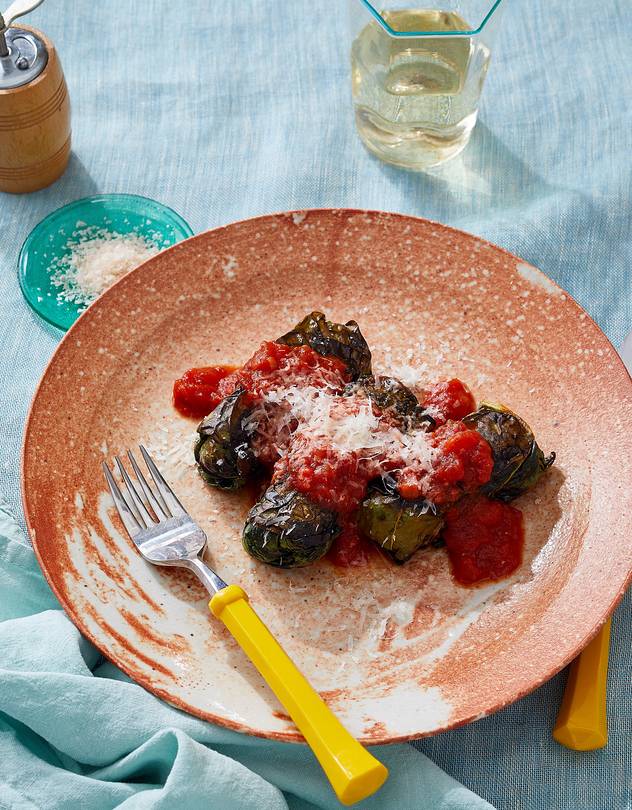
Photo: Bryan Gardner for The Wall Street Journal, Food Styling by Heather Meldrom, Prop Styling by Sarah Vasil
To make this recipe vegan, use nutritional yeast in place of Parmesan and follow the step in the Apteka stuffed cabbage recipe and whisk together ground flax seed and water as a substitute for the beaten egg. Take care to not over-blanch the chard. More delicate than cabbage, this leaf requires the shortest of dips in boiling water to become a pliant wrapper.
TOTAL TIME: 1½ hours MAKES: 18-20 rolls
For the spicy tomato sauce:
1½ tablespoons olive oil
½ cup finely chopped onions (about ¼ onion)
Kosher salt
2 cloves garlic, finely chopped
½ teaspoon crushed red chile flakes, plus more to taste
24 ounces crushed tomatoes
½ cup water
For the filling and assembly:
8 ounces cremini mushrooms, trimmed
7 tablespoons grapeseed oil or other neutral oil, plus more as needed
Kosher salt
2 cups finely chopped onions (about 1 large onion)
3 cloves garlic, finely chopped
1 tablespoon finely chopped sage
2 cups cooked brown rice
¼ cup mushroom stock or vegetable stock
¼ cup finely grated Parmesan or 3 tablespoons nutritional yeast, plus more for garnish
2 teaspoons freshly ground black pepper
¼ cup finely chopped roasted peppers
2 tablespoons Sherry vinegar
1 large egg beaten
1 large or 2 medium bunches chard
-
Make the spicy tomato sauce: Heat oil in a medium sauce pot over medium heat. Add onions, season with salt and cook, stirring occasionally, until translucent, about 7 minutes. Add garlic and cook until fragrant, about 2 minutes. Stir in chile flakes and crushed tomatoes. Add water to empty tomato can, swirl to catch any tomato remaining in can, and stir into pot. Reduce heat to low and simmer, stirring frequently, until flavors meld, 20 minutes. Season with more salt to taste and keep warm.
-
Make the filling: Preheat oven to 400 degrees. In a large bowl, combine mushrooms and 2 tablespoons oil. Season with salt and toss to combine. Transfer to a baking sheet and roast until softened and slightly browned, about 10 minutes. Let cool slightly. Once cool enough to handle, finely chop mushrooms, reserving any liquid.
-
In a large, high-walled skillet, heat 2 tablespoons oil over medium heat. Add onions, season with salt and cook, stirring frequently, until translucent, about 7 minutes. Add garlic and cook until light golden brown, about 2 minutes. Stir in sage, brown rice, mushroom stock and any reserved mushroom liquid. Cook until liquid is absorbed, about 2 minutes. Remove and let cool slightly.
-
In a large bowl, combine chopped mushrooms, cooked onion-rice mixture, Parmesan, black pepper, roasted peppers, vinegar and beaten egg. Season with salt to taste. (Makes about 4 cups.)
-
Prepare the chard: Bring a large pot of salted water to a boil. Prepare an ice-water bath. Working in batches, blanch 3-5 chard leaves until they soften slightly and become vibrantly green, 3-5 seconds. Transfer leaves to ice-water bath to halt cooking. Repeat until you have about 18 leaves total.
-
For the assembly: Lay a few layers of paper towels on a clean work surface. Working with one leaf at a time, use a paring knife to cut a narrow V into the base of each chard leaf and remove thickest part of rib. (This will flatten the leaf and make it easier to roll.) At the base of a leaf, place about 3 tablespoons of filling. Fold all sides in on each other, ensuring filling is completely enclosed. If you have any holes, use a smaller leaf to “patch.” Repeat with remaining chard leaves and filling.
-
In large cast-iron or other heavy skillet, heat 1½ tablespoons oil over medium-high heat. Working in batches to avoid crowding skillet, lay in chard rolls. Sear, turning once, until deeply browned on both sides, about 12 minutes. Repeat with remaining rolls. Top with more grated Parmesan and serve alongside spicy tomato sauce.
—Adapted from Desiree Tuttle of Achilles Heel, Brooklyn, N.Y.
How To Roll
Whatever sort of leaf you’re using, follow these four simple steps to wrap the filling.
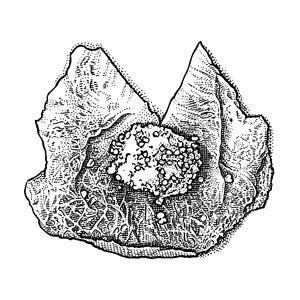
1. At base of leaf, remove thickest part of rib to create a V shape. Use your hands to shape filling into an oblong and place at base of V.
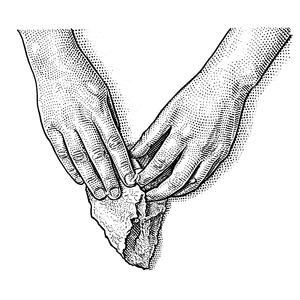
2. Fold edges of leaf inward so that they overlap one another, ensuring that all filling is completely enclosed.
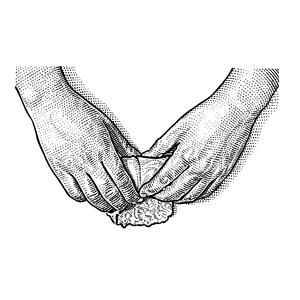
3. Roll folded leaf tightly over filling, toward opposite end of work surface. Keep edges of leaf tucked inward as you go.
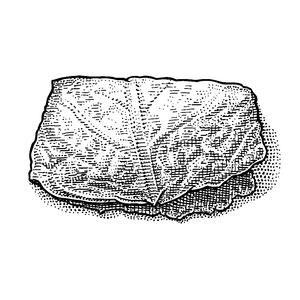
4. Finish roll seam-side down to secure it into a tidy, cylindrical parcel that will remain intact through oven braising or searing.
